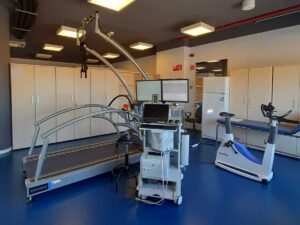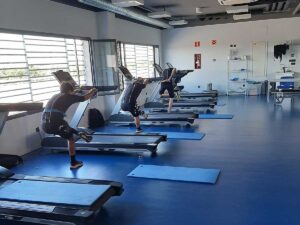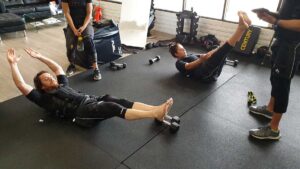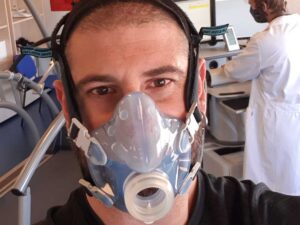Introduction
In this pilot study, we determined the effect of WB-EMS on body composition, strength parameters, viability and acceptance in a group of postmenopausal women. The hypothesis was that the WB-EMS exercise favorably affects body composition and strength in postmenopausal women.
Method
30 women were randomized into two groups: WB-EMS (n = 15) and control group (n = 15). In addition to resistance and strength training, the WB-EMS group performed training every 4-5 days for 14 weeks, while the control group maintained their previous training. A WB-EMS protocol was applied with a biphasic, rectangular and compensated wave and two types of programs were applied for 10 min each program. Program 1: 85 Hz, 350 us and a duty cycle of 4 seconds of electrical impulse and 4 seconds of rest. Program 2: 7 Hz, 350 us and continuous electrical stimulation.
During the WB-EMS training fifteen dynamic exercises were performed for all large muscle groups using a small range of motion. The exercises were designed not to cause physical adaptations in this previously trained cohort. The current intensity of the WB-EMS increased progressively during the intervention period.
Results
There was a significant reduction in skin folds in the WB-EMS. Waist and hip circumference also saw a significant reduction in the group with WB-EMS.
The maximum isometric strength of the trunk and leg extenders improved significantly in the WB-EMS group. Between WB-EMS and control group there were significant differences in these parameters after 14 weeks.
Conclusion
We conclude that for postmenopausal women unable or unwilling to perform dynamic strength exercises, WB-EMS can be a gentle and effective alternative to maintain lean body mass and strength.
Bibliography
Wolfgang Kemmler., Rebecca Schliffka., Jerry L. Mayhew. and Simon Von Stengel.Effect of Whole-Body Electromyostimulation on Resting Metabolic Rate, Body Composition, and Maximum Strength in Postmenopausal Women: The Training and Electrostimulation Trial. (2010). Journal of Strength and Conditioning Research. 24(7)/1880–1887.







